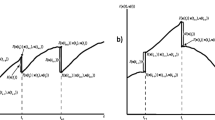Abstract
In this work, the problem of maximizing the volume of wood harvested in a single-species stand over a period of time is addressed. To this end, a solution that combines dynamic programming and a single-tree forest growth simulator is developed. In this method, the decision variable of the amount of wood to be harvested at each period is discretized. This ensures that the method finds a global optimal solution within the given discretization. In the past, there have been approaches that use exact methods which solve this problem, but these approaches consider the stand growth as a whole and require the simulator to meet certain conditions. In our work, a single-tree growth simulator is used. With these tools, different alternatives for the parameters of thinning percentage in each period, duration of the planning horizon, and the selection of the trees to be harvested, among others, are explored and assessed. The results showed that the proposed method is useful not only as a tool to optimize the harvesting of the timber of a single-species stand, but also to explore different alternatives to the usual practices, that continue to change constantly.











Similar content being viewed by others
References
Amidon EL, Akin GS (1968) Dynamic programming to determine optimum levels of growing stock. For Sci 14(3):287–291
Arthaud GJ, Klemperer WD (1988) Optimizing high and low thinnings in loblolly pine with dynamic programming. Can J For Res 18(9):1118–1122
Asante P, Armstrong GW, Adamowicz WL (2011) Carbon sequestration and the optimal forest harvest decision: a dynamic programming approach considering biomass and dead organic matter. J For Econ 17(1):3–17
Bellman R (1954) The theory of dynamic programming. Technical report P-550, The RAND Corporation, Santa Monica
Bettinger P, Graetz D, Sessions J (2005) A density-dependent stand-level optimization approach for deriving management prescriptions for interior northwest (USA) landscapes. For Ecol Manag 217(2):171–186
Brodie JD, Kao C (1979) Optimizing thinning in Douglas-fir with three-descriptor dynamic programming to account for accelerated diameter growth. For Sci 25(4):665–672
Brodie JD, Adams DM, Kao C (1978) Analysis of economic impacts on thinning and rotation for Douglas-fir, using dynamic programming. For Sci 24(4):513–522
Brukas V, Brodie JD (1999) Economic optimisation of silvicultural regimes for Scots pine using dynamic programming. Baltic For 5(1):28–34
Chappelle DE, Nelson TC (1964) Estimation of optimal stocking levels and rotation ages of loblolly pine. For Sci 10(4):471–502
Chen CM, Rose DW, Leary RA (1980) Derivation of optimal stand density over time—a discrete stage, continuous state dynamic programming solution. For Sci 26(2):217–227
Diaz-Balteiro L, Rodriguez LCE (2006) Optimal rotations on Eucalyptus plantations including carbon sequestration—a comparison of results in Brazil and Spain. For Ecol Manag 229(1–3):247–258
Graetz DH, Sessions J, Garman SL (2007) Using stand-level optimization to reduce crown fire hazard. Landsc Urban Plan 80(3):312–319
Haight RG (1987) Evaluating the efficiency of even-aged and uneven-aged stand management. For Sci 33(1):116–134
Haight RG, Brodie JD, Dahms WG (1985) A dynamic programming algorithm for optimization of lodgepole pine management. For Sci 31(2):321–330
Kao C, Brodie JD (1979) Determination of optimal thinning entry interval using dynamic programming [Pseudotsuga menziesii]. For Sci 25(4):672–674
Meneses M, Olivares B (1986) Estrategia óptima de corta de nivel de rodal en plantaciones de Pinus radiata. Bosque 7(1):3–8
Nagel J, Schmidt M (2006) The silvicultural decision support system BWINPro. In: Hasenauer H (ed) Sustainable forest management: growth models for Europe. Springer, Berlin, pp 59–63
Paredes VGL, Brodie JD (1987) Efficient specification and solution of the even-aged rotation and thinning problem. For Sci 33(1):14–29
Ribeiro NA, Surový P, Yoshimoto A (2012) Optimal regeneration regime under continuous crown cover requirements in cork oak woodlands. FORMATH 11:83–102
Tahvonen O, Rämö J (2016) Optimality of continuous cover vs. clear-cut regimes in managing forest resources. Can J For Res 46(7):891–901
Wimberly MC, Bare BB (1996) Distance-dependent and distance-independent models of Douglas-fir and western hemlock basal area growth following silvicultural treatment. For Ecol Manag 89(1–3):1–11
Yoshimoto A, Marušák R (2007) Evaluation of carbon sequestration and thinning regimes within the optimization framework for forest stand management. Eur J For Res 126(2):315–329
Yoshimoto A, Haight RG, Brodie JD (1990) A comparison of the pattern search algorithm and the modified PATH algorithm for optimizing an individual tree model. For Sci 36(2):394–412
Yoshimoto A, Asante P, Konoshima M (2016a) Stand-level forest management planning approaches. Curr For Rep 2(3):163–176
Yoshimoto A, Paredes VGL, Brodie JD (2016b) Efficient optimization of an individual tree growth model. FORMATH 15:20–32
Acknowledgements
Mario C. López-Locés was supported by a postdoctoral fellowship from the Teaching Development Program (PRODEP) [511-6/17-2607]. José Luis González-Velarde would like to thank Tecnologico de Monterrey Research Group in Optimization and Data Science.
Author information
Authors and Affiliations
Corresponding author
Additional information
Publisher's Note
Springer Nature remains neutral with regard to jurisdictional claims in published maps and institutional affiliations.
Notation
Notation
Table 6 contains the notation and description of the abbreviations of the optimization methods mentioned in this paper.
Rights and permissions
About this article
Cite this article
López-Locés, M.C., Ríos-Mercado, R.Z., Aguirre-Calderón, O.A. et al. Towards sustainable timber harvesting of homogeneous stands: dynamic programming in synergy with forest growth simulation. TOP 28, 575–598 (2020). https://doi.org/10.1007/s11750-020-00548-z
Received:
Accepted:
Published:
Issue Date:
DOI: https://doi.org/10.1007/s11750-020-00548-z




